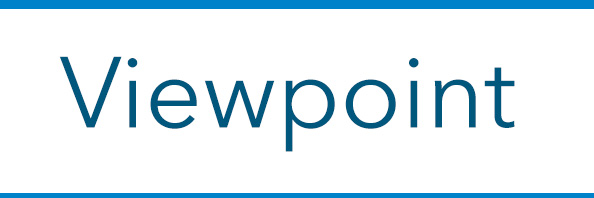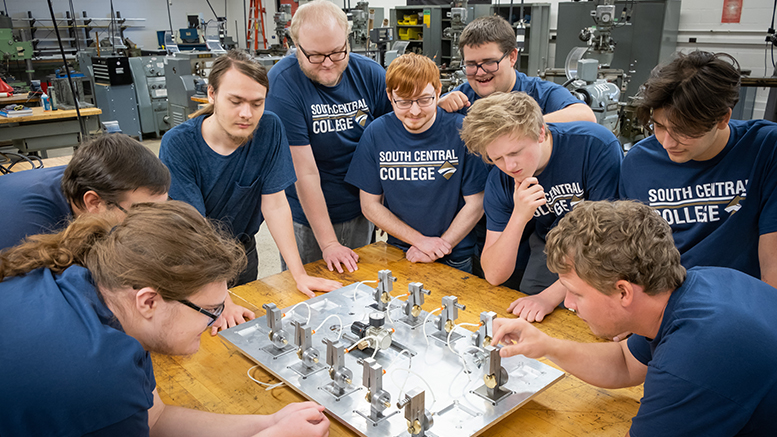The time for our uniquely abled populations in the workforce is now. Industry partners are readier than they have ever been to consider hiring uniquely abled populations. It’s our time, as educators, to deliver students who are primed for these positions and help our industry partners support these uniquely abled employees once they are in the workforce.

Over the past two summers, South Central College (Minnesota) has partnered with the Uniquely Abled Project to offer the Uniquely Abled Academy (UAA), a CNC operator program for individuals with autism. We have learned so much. Here are some of our takeaways.
This article comes from the current issue of the Community College Journal, published by the American Association of Community Colleges.
Find your “Karen.”
In the world of The Uniquely Abled Project (UAP), a Karen is a great thing. Karen Navarro is the name of a woman who took on the role of supporting uniquely abled individuals throughout the academy. When we first looked at hosting a Uniquely Abled Academy, that’s exactly what the UAP consultant told us: “Find your Karen.”
What that translated to was finding someone who deeply cares about helping students, understands uniquely abled students and their needs in a classroom environment, is nimble enough to pivot at a moment’s notice, and has a humbling confidence where they can bring up concerns and new strategies to tenured faculty.
Our “Karen” happened to be named Courtney Jones, who came to us as a paraprofessional from the school district. As we were getting the program off the ground, there were days where we weren’t sure if it would run. Courtney’s approach was “Just let me know if you need me for the job.” This was a tell of how nimble she was, and this served us extremely well when piloting a new program. Courtney was our success coach throughout the duration of the Academy.
Even if you don’t have a success coach tied to a class or program, how can you leverage positions and people who are passionate about helping uniquely abled students and position them in the classroom throughout the year?
Engage faculty who are truly lifelong learners.
We all like to think we are lifelong learners, especially when we dwell in higher education. But, recall the last technology upgrade at your campus as a better litmus test to see how much of a lifelong learner you truly are. And in this same vein, don’t necessarily discount your veteran faculty — some of them truly are lifelong learners.
We were lucky to happen upon machine tool technology (MTT) faculty Jon Morgan and Bill Block. In our first cohort, they worked to instruct our uniquely abled students. And while our interaction first occurred because we were using “their lab,” it quickly turned into a great partnership. Jon and Bill were open to learning how to serve uniquely abled students, and they trusted Courtney to guide the way. Courtney didn’t know a thing about MTT, and Jon and Bill didn’t know much about serving uniquely abled students, so they were learning together.
Having a summer focused on working with uniquely abled students with an expert success coach to help implement resources to help students feel safe allowed Jon and Bill to learn strategies they could implement in their semester-long, credit-based programs.
The question to reflect on here is, how are you helping faculty learn and implement strategies that will support uniquely abled students in the classroom?
Learn alongside industry partners.
I’ll admit, there will be missteps in this process, and it’s not going to be an easy plug-and-play solution. But if industry partners are primed to support uniquely abled employees, they are primed to serve all employees better. This is an opportunity to help elevate our workforce to be more inclusive and accessible.
Let’s use the knowledge we have from years of serving uniquely abled students and help employers put these same services and strategies in place. We have been doing this longer than our industry partners and we do have experience to share.
What can you do today to help equip your industry partners when serving uniquely abled employees in the workforce?
Integrate, don’t just offer, wraparound services.
In the program’s first year, we offered students the option of enrolling in programs with local workforce providers. It wasn’t monitored or enforced. Some students took advantage of this or were working with service providers already, but one example where we failed was we had a student looking to work with a local manufacturer in his hometown. The student couldn’t get through some of the typical hiring barriers that some of us don’t even realize are barriers. When I met with our state-wide service provider from the Department of Economic and Employment Development-Vocational Rehabilitation Services (DEED-VRS), they mentioned they had a connection at that manufacturer and if they were working alongside the student, they could have helped him through the process.
Since then, we have integrated wraparound services into the program. When a student is accepted into the Uniquely Abled Academy, they can either pay around $2,500 or they can sign up for services with DEED-VRS and they get services and funding allocated for the program. With this model, we’ve seen students accessing more workforce opportunities. These services follow them into the workplace and help educate the employer on how to build a sustainable workforce with traditionally marginalized populations.
A question to reflect on: In traditional credit-based programs, how are you tapping into community wraparound resources to help successfully carry the uniquely abled student from campus to the workforce?

